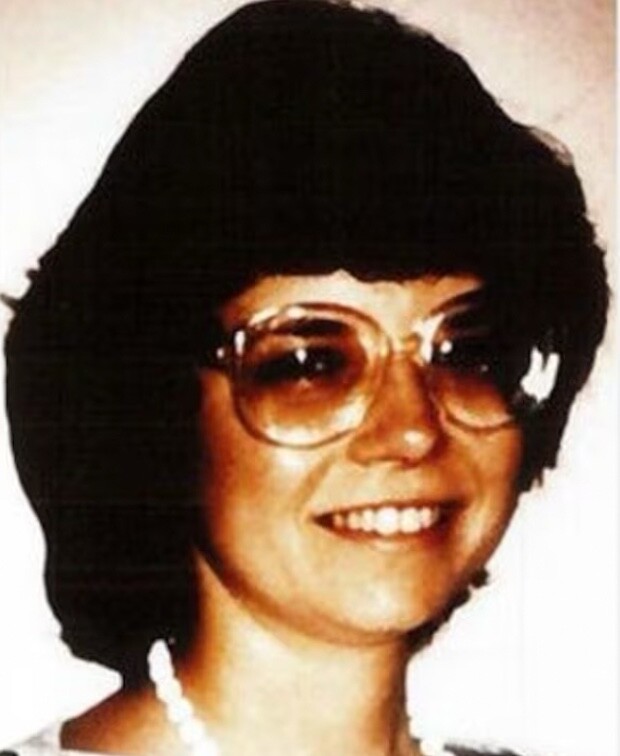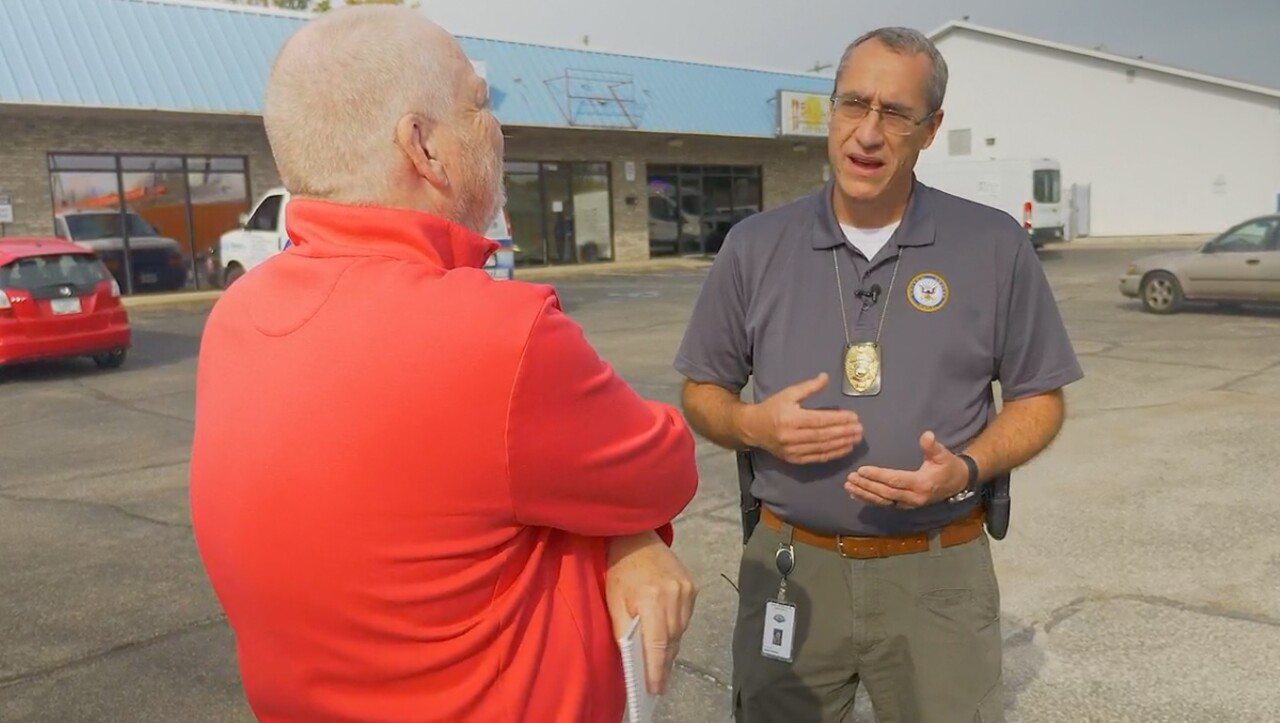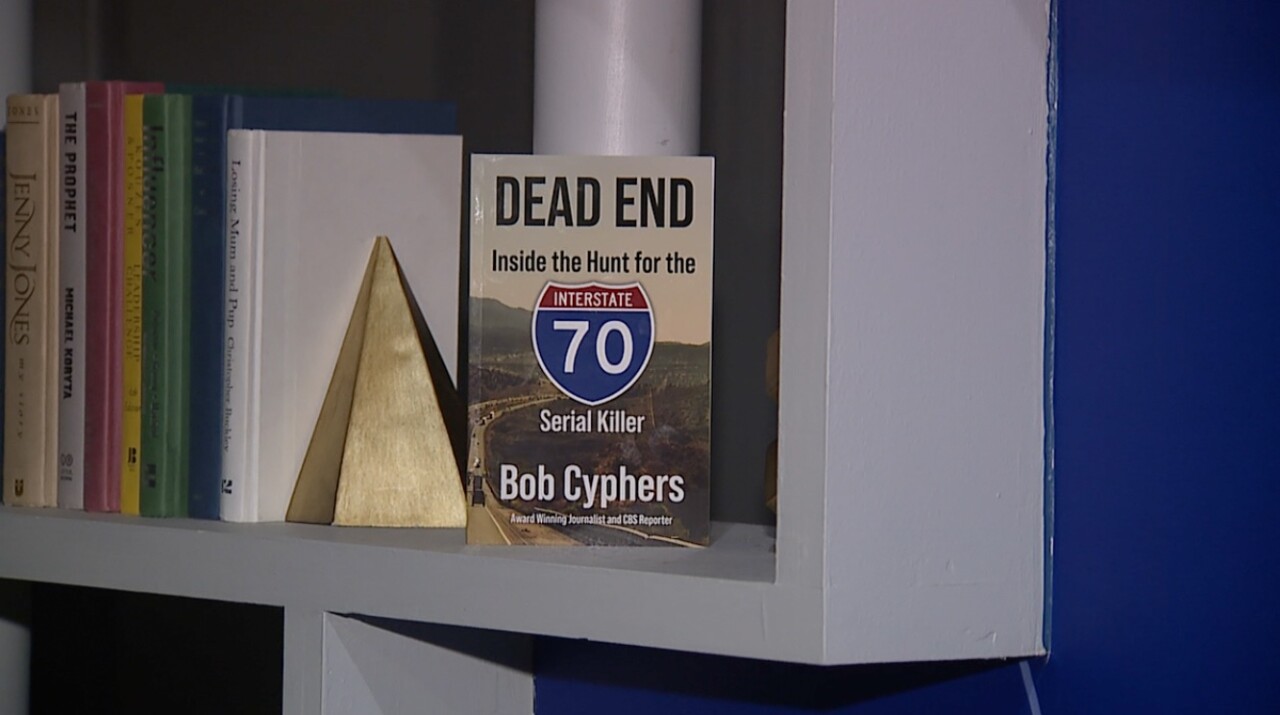RAYTOWN, Mo. — A 1992 serial killer responsible for murders in cities throughout the Midwest has never been found or identified.
Elisa Breitenbach owns a bakery called Doughboys in Raytown.
It's in the same plaza where the killer murdered the last known victim, Sarah Blessing.
"I grew up in Raytown and moved away at 17-years-old," Breintenbach said.
Breitenbach's store front has only existed in Raytown for 13 years, but she has a vivid memory of what happened a few doors down at the Store of Many Colors in 1992.

"They [owners of the Store of Many Colors] were living out their dream — the All-American dream — doing what they truly love doing and sharing with this community the wonderful gifts that they’ve made," Breitenbach said.
That was until one day Sarah Blessing was shot and killed execution style inside of her store.

Every now and then, Breitenbach is still reminded of that day.
"How do you get over lives just being taken for no reason?" she said.
Why the name 'Interstate 70 serial killer'?
The murders started in Indianapolis and within a month, there were a total of six known victims in five cities.
All of the murders were a short distance from Interstate 70. The victims were store clerks linked by a rare murder weapon and ammunition.

Robin Fuldauer was 26-years-old working at a Payless shoe store in Indianapolis. She was killed on April 8, 1992.
Patricia Magers was 32-years-old and Patricia Smith was 23-years-old working at the La Bridal shop in Wichita, Kansas.
They were killed on April 11, 1992.
Michael McCown was 40-years-old when he was killed in his shop called Sylvia’s Ceramics in Terre Haute, Indiana, on April 27, 1992.
McCown was the only male victim.
Nancy Kitzmiller was 24-years-old when she was killed in the back room of Boot Village in St. Charles, Missouri, on May 3, 1992.
Sarah Blessing was the last known victim. She was killed on May 7, 1992 in Raytown.
"Every few years, I notice a reporter from St. Louis who comes back here to do a story," Breitenbach said. "I run over there in hopes that they actually broke the case, only to find out he’s still working the case."
"Every scene had its own story" - Bob Cyphers
The journalist Breitenbach remembers is now retired.
Bob Cyphers was working on a news desk in St. Louis when the fifth homicide call came in at a brand new shopping center there.
"30 years ago, I’m working on a news desk on a beautiful Sunday spring afternoon. A Cardinal baseball game is going on behind me and I hear a homicide call in a very busy, brand new shopping center in St. Louis called Bogey Hills," Cyphers said.

Cyphers clearly remembers talking to police on the scene that day.
"What a strange place for a homicide. I recognize one of the cops and pull him over — robbery? No. Rape? Sexual Assault? No. Disgruntled boyfriend? No. What’s left? We [police] don’t know. This is odd," Cyphers said.
He stuck with this investigation every day after that even in his retirement.
Cyphers even worked with police while they tried to track down the killer.
"As the years went by, the cases went cold," he said.
Cyphers recently wrote a book about the murders.
He's been taking it to every city where the killer struck to put the case at the top of people's minds.

"Every scene had its own story," he said.
All of these scenes were hundreds of miles a part, but they had something in common — each murder was a short distance from I-70.
It’s Detective Kelly Rhodes’ job at the St. Charles Police Department in the St. Louis-area to figure out why.
Below is the full conversation KSHB 41's Alyssa Jackson had with Cypher:
The I-70 serial killer task force
In 2021, the St. Charles Police Department put together a task force with all of the police departments investigating cold cases attached to the Interstate 70 killer.
They also hired Kelly Rhodes, a detective whose sole job is to track down the killer.
"What my role has been is going back to the very beginning," Rhodes said.
For two years, they’ve been retracing the killer’s steps with every resource they have.

"Things that we didn’t think we’d be able to do when we first started this case, well now, we think we can do it," he said.
They are hoping DNA will finally pin the suspect.
"When this initially happened, DNA wasn’t really as far as processing and extracting. It wasn’t really a thing yet," Rhodes said. "There were fingerprints, they dusted for fingerprints, but they may not have necessarily sent it to a lab to see what DNA they could get off it."

Rhodes said a week doesn't go by without any new tips.
"We’ve gotten so many calls, so many leads of people now bringing forth information," Rhodes said. "If there’s new information we release sometimes it sparks a memory."
There isn't a set timeline on how long the detective will maintain this role.
Rhodes said everything they do is for the families who've been waiting to know something for decades.
"Just knowing we did everything, absolutely everything we possibly could," Rhodes said. "In 30 years, so much has changed."
All of these years later, there are still many unknowns.
"At least we stopped him, did we?" Cyphers said.
The communities in Terre Haute, Indianapolis, Raytown, Wichita and St. Charles will never forget these victims.
They're hoping eventually there will be an end of the road for the I-70 serial killer.
“It should end soon," Breitenbach said."It’s been long enough.”
The St. Charles Police Department has a page and tip portal set-up specifically for this case.
KSHB 41 reached out to every police department for any updates on their investigation.
The Terre Haute Police Department sent a statement:
The Michael McCown murder in 1992 started to get more attention about 6 years ago and has consistently been worked ever since. Interest in this case seems to have picked up in recent months. We are still talking with people and have had meetings concerning this case.
The Indianapolis Metropolitan Police Department said there are no updates.
After declining an interview, the Raytown Police Department said there are no updates in the investigation.
The Wichita Police Department had not responded yet to a request for comment at the publication of this story.
—




